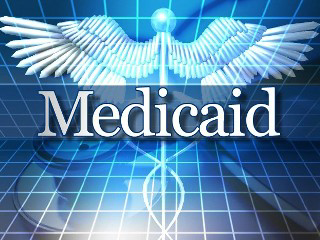By Giavanni Alves, Staten Island Advance, N.Y. (TNS)
The federal government is enacting several new retirement policies increasing access to retirement plans and limiting costs to withdraw funds.
The Secure 2.0 Act of 2022, which was included in the $1.7 trillion omnibus spending bill that President Joe Biden signed at the end of December, includes more than 90 provisions.
Here’s a look at eight of the provisions outlined in the Senate Finance Committee’s breakdown of the Secure 2.0 Act:
1. Expanding automatic enrollment in retirement plans
This provision requires 401(k) and 403(b) plans to automatically enroll participants in their respective plans upon becoming eligible. Employees can opt out of the plan if they wish.
The initial automatic enrollment amount is at minimum 3% and no more than 10%. Each following year, the amount is increased until it reaches at least 10% but no more than 15%.
All current 401(k) and 403(b) plans are grandfathered in. The provision is effective for plan years beginning after Dec. 31, 2024.
2. Contributing to student loan payments
To offset difficulties saving for retirement due to student loan debt, employees can receive matching contributions from their employers under a 401(k) plan, 403(b) plan or SIMPLE IRA with respect to “qualified student loan payments.”
The provision is effective for contributions made for plan years beginning after Dec. 31, 2023.
3. Saver’s Match
Under current law, eligible low-income earners who make contributions to retirement plans (i.e., ABLE accounts, employer retirement plans and individual retirement accounts) can receive a nonrefundable tax credit paid in cash as a tax refund. The new policy, which is effective for taxable years beginning after Dec. 31, 2026, replaces the credit with a federal matching contribution to be deposited in the taxpayer’s retirement plan.
The match is 50% of retirement account or plan contributions, up to $2,000 per individual. The match phases out between $41,000 and $71,000 in the case of taxpayers filing a joint return ($20,500 to $35,500 for single taxpayers and married filing separate; $30,750 to $53,250 for head of household filers).
4. Increase in required age to begin mandatory distributions
Currently, participants are generally required to begin taking distributions from their retirement plans at age 72. The new required minimum distribution age is 73 as of Jan. 1, 2023 and will increase to 75 on Jan. 1, 2033.
5. Higher catch-up limit for ages 60-63
Under current law, employees who have attained age 50 are permitted to make catch-up contributions under a retirement plan in excess of the otherwise applicable limits. For 2021 the limit was $6,500, except for the $3,000 limit for SIMPLE plans.
This provision, which is effective for taxable years beginning after Dec. 31, 2024, increases the limit to the greater of $10,000 or 50% more than the regular catch-up amount in 2025 for individuals who are between 60 and 63 years old.
6. Withdrawals for certain emergency expenses
Typically, early distributions from tax-preferred retirement accounts such as 401(k) plans and IRAs are subject to an additional 10% tax. Under the new provision, employees can withdraw emergency expenses from their accounts for “unforeseeable or immediate financial needs relating to personal or family emergency expenses.”
Account holders are limited to one distribution of up to $1,000 per year with the option to repay it within three years. If they do not repay within three years, they must wait until the end of the repayment period to make another withdrawal.
7. Improving retirement benefits for part-time workers
Under current law, employers are required to allow long-term, part-time workers—those who have completed one year of service with 1,000 hours or three consecutive years of at least 500 hours of service each year—to participate in the employers’ 401(k) plans.
The Secure 2.0 Act reduces the three-year minimum to two years, effective for plans beginning after Dec. 31, 2024.
8. Retirement savings lost and found
Retirees and companies alike sometimes are unable to find each other to receive or send the benefits due to changes in name and/or address. The Department of Labor will create a national online searchable “lost and found” database for Americans’ retirement plans, allowing those who may have lost track of their pension or other employer retirement plan to search for the contact information of their plan administrator. The database shall be created no later than two years after the legislation’s enactment.
_____
(c)2023 Staten Island Advance, N.Y. Visit Staten Island Advance, N.Y. at www.silive.com. Distributed by Tribune Content Agency LLC.
Thanks for reading CPA Practice Advisor!
Subscribe Already registered? Log In
Need more information? Read the FAQs
Tags: Benefits, Payroll, Small Business




